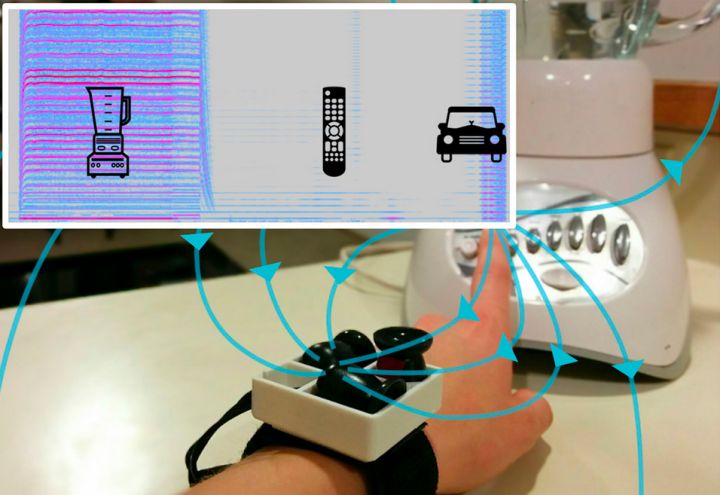
Developed by researchers at the University of Washington, this unique wearable may not be able to count calories, but it can count how many watts you’ve used by way of the devices you interact with on a day-to-day basis. By using the individual electromagnetic radiation signatures that various electrical devices generate when they’re switched on, scientists found that after a single calibration, they could identify (with 94 percent accuracy no less) our interactions with 12 everyday devices, including microwaves, blenders, remote controls, electric toothbrushes, laptops, light dimmers, and even cars and buses.
“It’s another way to log what you’re interacting with so at the end of the day or month you can see how much energy you used,” said Shwetak Patel, Washington Research Foundation endowed professor of computer science & engineering and electrical engineering noted in a statement. “Right now, we can know that lights are 20 percent of your energy use. With this, we divvy it up and say who consumed that energy.”
The coolest thing about MagnifiSense — if you can boil it down to just one thing, that is — lies in its ability to differentiate between many different types of electrical tools and appliances by “listening” to how each of these electricity-consuming devices ‘sings.’
“When a blender turns on, for instance, modulators change the current profile of the device and create something similar to a vocal cord pattern,” explains study lead author and UW electrical engineering student Edward Wang. “A blender ‘sings’ quite differently than a hair dryer even though to our ears they sound similar.”
And while detection of this sort may seem to require NASA-level equipment, as Gizmag notes, MagnifiSense only uses “three basic, off-the-shelf sensors that use coils of wire around magnets (inductors), to accurately capture a broad frequency range of electromagnetic radiation without being too power hungry.” Of course, the signal processing and machine learning algorithms that complete the project are nothing if not complex, so don’t assume you can create one of these gadgets overnight for yourself.
Moving forward, the team at the University of Washington believes that this new wearable could have a variety of different applications, from detecting when an appliance has been left on too long, to keeping track of geriatric patients and their interactions with technology. And as for its design, MagnifiSense is working on that as well, with hopes that the technology could ultimately be embedded into existing wearables. “We think it could be integrated into any wrist-sized product,” said Patel. “The next steps are really to look at what other devices we can detect and work on a prototype that’s wearable.”
So keep on keepin’ on, MagnifiSense. After all, nobody else out there is helping us keep track of our electricity usage.


